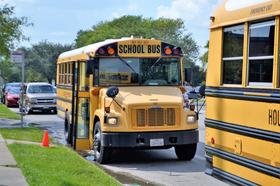Transfer Pathways: Moving from One Public School District to Another
When a student moves from one public school district to another—or when a family wishes to transition their child to a non-resident district—the concept of transfer pathways becomes critical. Whether prompted by a relocation, school fit concerns, academic programs or safety issues, navigating the process of moving between public school districts in 2025 requires preparation, awareness of state/district rules, and proactive communication. This article outlines key considerations, steps, eligibility factors and expert commentary to help parents, students and educators make informed decisions about district-to-district transfers.
Why Families Choose to Use Transfer Pathways
Families may pursue transferring a student between public school districts for several reasons:
Relocation to a new address outside the student’s current district boundary.
Seeking a better academic program, extracurricular offering or specialized service that the resident district may not offer.
Safety, health or hardship issues that make the current school environment less appropriate.
Opportunity for open-enrollment or inter-district choice policies in certain states.
Understanding the motivation early helps frame which type of transfer pathway is relevant—whether an intra-district move, inter-district “choice” transfer or a residency-related enrollment change.
Terminology: Intra- vs. Inter-District Transfers
It is useful to distinguish between common terms:
Intra-district transfer: The student remains within their home district but changes schools (e.g., moves from one elementary school in the district to another).
Inter-district (or nonresident) transfer: The student transfers from their resident district to a different public school district entirely (sometimes called “choice transfer”, “open enrollment” or “nonresident student transfer”).
Open enrollment policy: State or district policy that allows students to attend public schools outside their zoned or resident district under certain conditions. Education Commission of the States
In 2025, many states maintain open-enrollment or choice transfer policies, though eligibility rules, deadlines and costs vary widely.
Key Eligibility and Policy Factors in 2025
When considering a transfer path between public school districts, keep in mind the following variables:
Residency and District Approval
A student’s “resident” district is typically determined by their home address; moving addresses often triggers enrollment reassignment. moving.com
For inter-district transfers, both the resident district (which must release the student) and the receiving district (which must admit the student) often must approve.
Some districts require proof of residency, home lease/ownership, utility bill, or other documentation.
Open Enrollment / Choice Policies
State-by-state policies differ: in some states open enrollment is guaranteed; in others it is optional or only available under hardship circumstances.
It is vital to check the specific school district’s policies for the year (2025) as they may change annually.
Timing, Deadlines and Transfer Windows
Many districts establish annual transfer request windows; some allow mid-year transfers only under hardship or safety conditions.
Submitting early is advisable—delays can affect curriculum alignment, transportation eligibility and extracurricular participation.
Extracurricular and Athletic Eligibility
For high-school sports, transferring districts may have additional rules about student-athlete eligibility (e.g., waiting periods).
Special Education and IEPs
Students with an Individualized Education Program (IEP) transferring between districts remain covered under the federal Individuals with Disabilities Education Act (IDEA) requirements; the new district must provide comparable services until a new IEP is in place. ldaamerica.org
Step-by-Step Transfer Pathway: Best Practice Timeline
Here is a suggested sequence of actions for families considering a transfer between public school districts in 2025:
| Step | Action | Notes |
|---|---|---|
| 1 | Explore motivation & goals | Clarify why you want to move districts (academic opportunity, relocation, hardship) |
| 2 | Research residency/district rules | Confirm address zone, district policies, open-enrollment options |
| 3 | Contact both districts | Speak with current (sending) district and prospective (receiving) district about transfer requirements |
| 4 | Collect required documentation | Student records, birth certificate, immunization records, transcripts, IEP/504 plans if applicable |
| 5 | Submit transfer request or enrollment application | Adhere to deadlines; consider applying for out-of-district or choice transfer if applicable |
| 6 | Follow up and monitor status | Stay in contact with both districts to track approval, records transfer, transportation arrangements |
| 7 | Manage transition/adjustment | Prepare student socially and academically: visit new school, review curriculum changes, arrange transportation |
| 8 | Confirm participation eligibility | Especially for high school students: check athletic eligibility and extracurricular entry points |
| 9 | Update residency/address documentation | Ensure new address is registered and on file if the transfer is based on residence |
| 10 | Maintain communication | Between parents, student, school counselors and teachers for smooth adaptation |
Following this structured approach helps ensure you maximise the chances of a successful transfer between school districts.
Common Scenarios and Transfer Pathways Explained
Scenario A: Family Moves to a New Address in a Different District
When a family relocates, the student may change districts automatically based on the zoned district. If the family prefers another district (non-resident), the open-enrollment or choice transfer process must be explored. Be aware: in many cases, tuition, transportation or other conditions apply.
Scenario B: Student Seeks a Different District Without Moving
In states/districts supporting open enrollment, a student may apply for a nonresident transfer simply for programmatic or academic fit reasons. For example, specialized magnet or advanced-learning programs may be in non-resident districts. The resident district must release the student and the receiving district must admit.
Scenario C: Student with Special Education Needs Moves Districts
Under IDEA, when a student with an IEP transfers, the new district must provide comparable services until a new IEP is adopted. Record gathering and coordination is key.
Scenario D: Mid-Year Transfer Due to Hardship or Safety
Many districts allow mid-year transfers under certain hardship conditions (travel distance, unsafe environment, medical issues). As an example, in the New York City Department of Education area, a “guidance transfer” or “medical transfer” may be granted with appropriate documentation.
Risks, Considerations and Expert Commentary
Transportation logistics: Even if the transfer is approved, transportation may be parental responsibility if outside the receiving district’s usual zone. mypromoversdc.com
Curriculum and credits alignment: Especially in high school, course credits may differ across districts; early planning is essential for graduation timeline.
Athletic eligibility: Transfers can affect eligibility for varsity sports; families should review state interscholastic rules. College Confidential Forums
Permission is not guaranteed: Schools or districts may deny a transfer request based on capacity, policy, residency or other criteria.
Record transfer delays: To avoid gaps in instruction, request that the sending school forwards records promptly and the receiving school initiates intake quickly.
According to a parent comment online:
“That is 100 % dependent on the school district and state laws.”
This underscores the variability across locations and underscores the need for local investigation.
Expert Tip: Parental Engagement and School Fit
Education experts consistently emphasise the importance of parental involvement during transfer transitions. Prior to enrollment in the new district, schedule a meeting with the guidance counsellor or registrar to understand how the school will support your child, especially if the move is for programmatic fit or special education services. Open dialogue helps ensure smoother adaptation.
Summary Table: Transfer Pathway Comparison
| Feature | Intra-District Transfer | Inter-District (Nonresident) Transfer |
|---|---|---|
| Same district | Yes | No |
| Requires release/admission by two districts | Often no | Yes |
| Residency change required | Not always | Usually yes (or special permission) |
| Open-enrollment system required | Not typically | Often required |
| Transportation responsibility | Usually within district routing | May require parent transport or district agreement |
| Cost/tuition risk | Low | Possibly higher (in some states) |
| Complexity | Lower | Higher |
Looking Ahead: 2025 Trends & Policy Notes
In 2025, district and state policy landscapes continue to evolve. Several states have expanded open enrollment options in recent years, meaning more families may have access to inter-district transfers. For example, one review noted that “all 50 states permit public school transfers in at least some cases” though the breadth of access varies.
As districts face enrollment pressures, transportation challenges and equity concerns, families should anticipate potential wait-lists, capacity limits and evolving rules. Early planning and consultation with district staff remain key.
Final Thoughts: Maximising Transfer Success
Transitioning from one public school district to another can offer important educational opportunities—whether for academic advancement, fit, or logistical needs. However, success depends on understanding the rules, preparing documentation, engaging with both districts, and supporting the student’s adjustment.
By following a systematic process, keeping open communication with school officials, and proactively addressing issues such as transportation, curriculum alignment and extracurricular eligibility, families can navigate the transfer pathway with greater confidence. In 2025, with a shifting policy landscape, being informed and prepared remains your strongest asset when exploring movement from one public school district to another.













